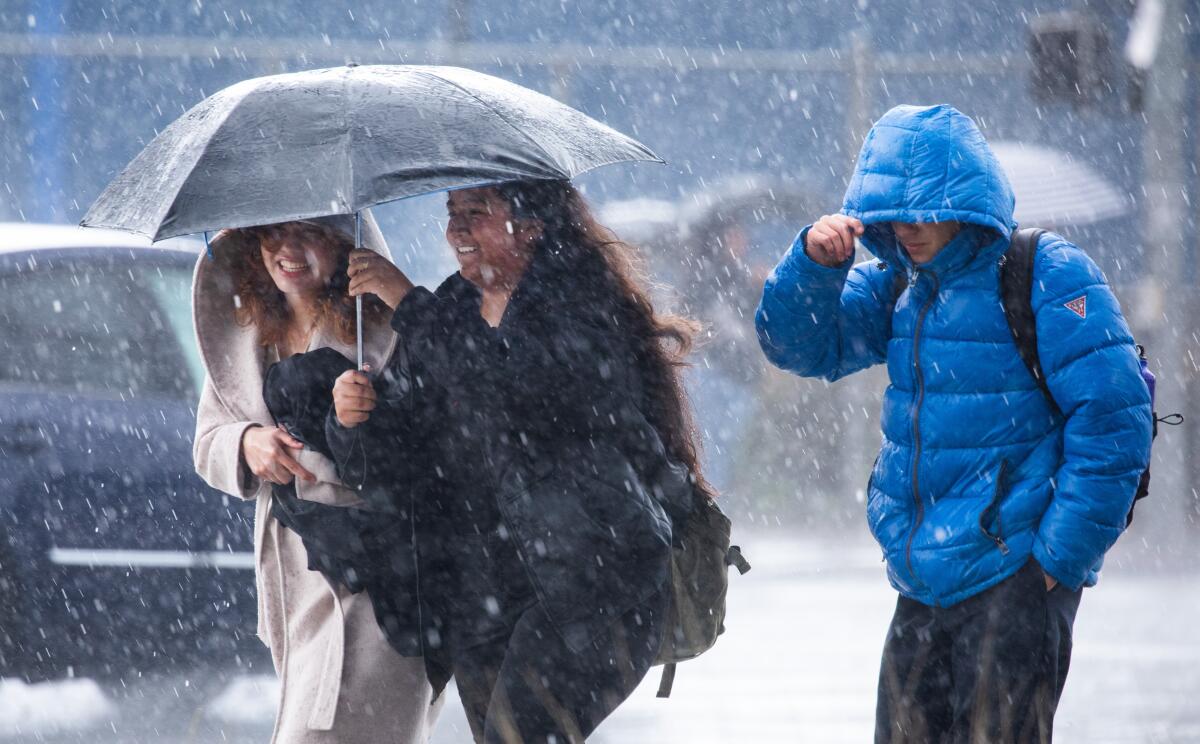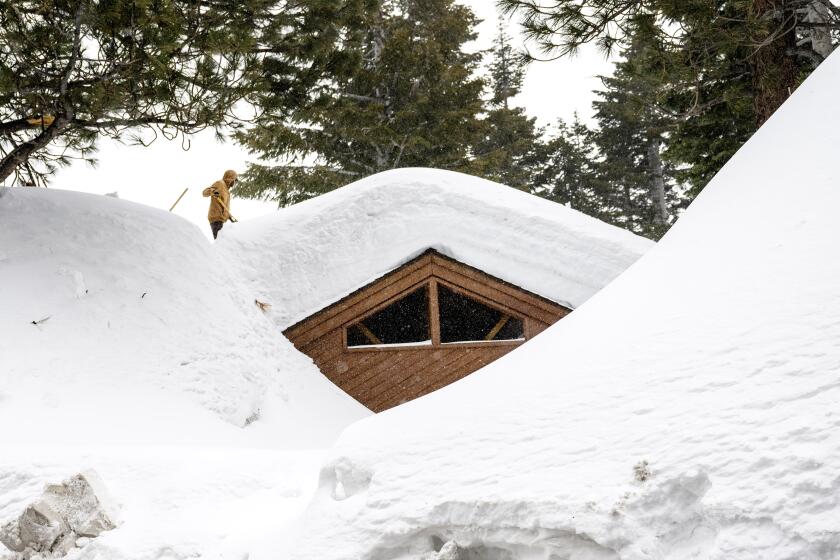The California chill: State recorded fifth-coldest March in 129 years amid storms, snow

Californians who feel like March was one of the coldest and wettest they’ve endured have the data on their side.
Data from the National Oceanic and Atmospheric Administration show that last month was the fifth-coldest March in California since 1895, the first year in the agency’s database. The average temperature across the state was 44.2 degrees, nearly 9 degrees lower than the average of 53.1 degrees from March 2022.
Last year’s March was the 11th warmest in the 129 years of record keeping.
Daniel Swain, a climate scientist at UCLA, posted Monday on Twitter that “a few regions of Northern California just experienced their coldest March on record.”
Epic snowfall at Mammoth Lakes has become a nightmare for residents of this California ski resort community.
The year-over-year change is “highly remarkable given the sustained long-term warming trend,” Swain tweeted. Two of California’s warmest three Marches since 1895 happened in the last 20 years.
The coldest March in California was in 1897, when average temperatures dropped to 43.1 degrees. The warmest March happened during the Dust Bowl era: 57.2 degrees in 1934.
This March capped a four-month period that was the coldest in California in 44 years, Swain said. But the winter ranked only 17th coldest in the last 129 years as historically average temperatures from December to March were significantly lower before a warming trend became apparent, Swain said.
California’s average temperature from December through March rose at a rate of about 2.1 degrees per century from 1895 to now, according to NOAA data.
The snowpack is so deep that it currently contains roughly 30 million acre-feet of water — more water than Lake Mead, the nation’s largest reservoir.
With the cold weather came substantial precipitation across the state. The wet season was the “wettest on record in some parts of interior” California, Swain tweeted, referring to the Central Valley and central and southern Sierra.
With more than 27 inches of precipitation on average, California’s recent wet season ranked as the eighth wettest. Eight counties — El Dorado, Amador, San Joaquin, Calaveras, Tuolumne, Alpine, Mono and Fresno — saw their most precipitation on record from November through March.
Looking ahead, the weather is likely to become more extreme, Swain said. “The driest periods are likely to be drier and the wettest periods wetter,” he tweeted.
More to Read
Sign up for Essential California
The most important California stories and recommendations in your inbox every morning.
You may occasionally receive promotional content from the Los Angeles Times.











